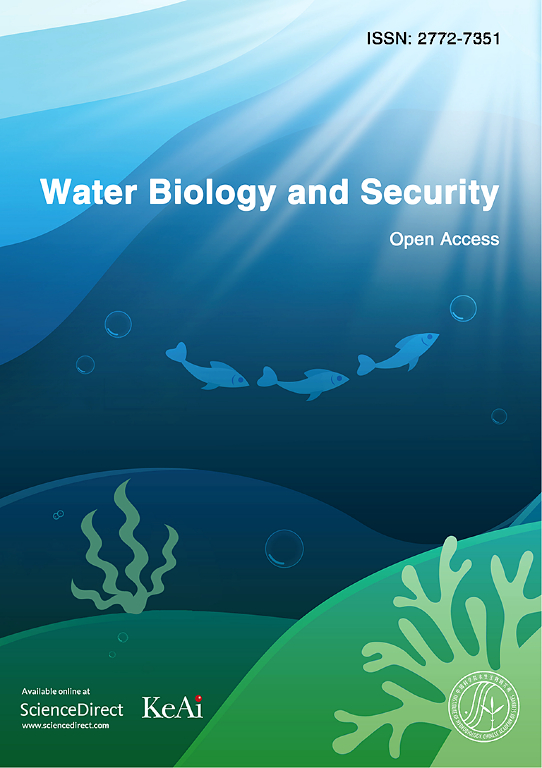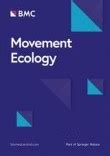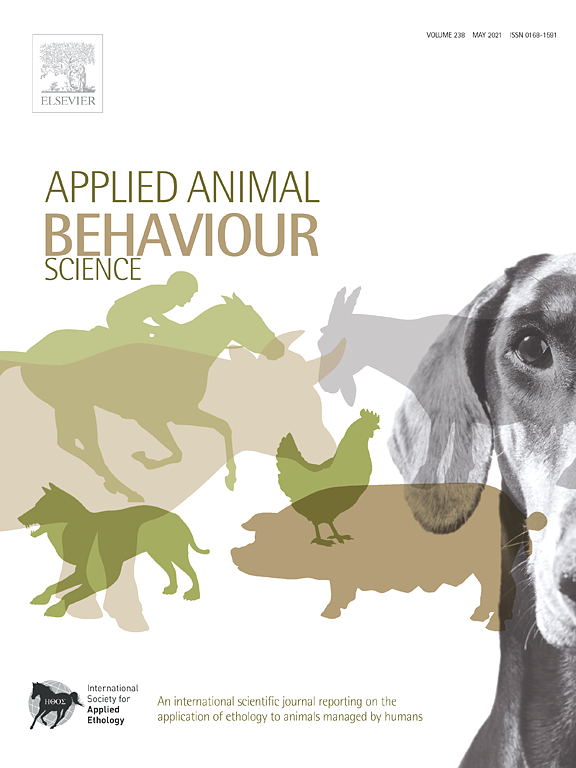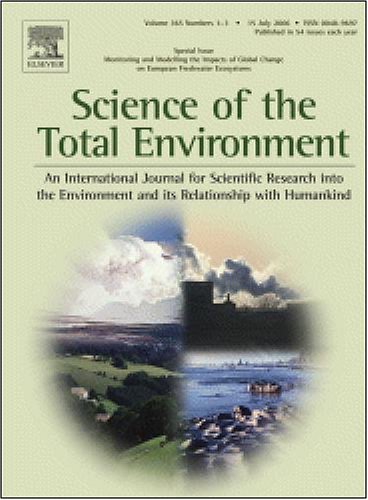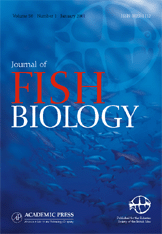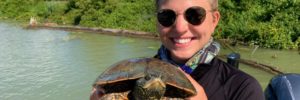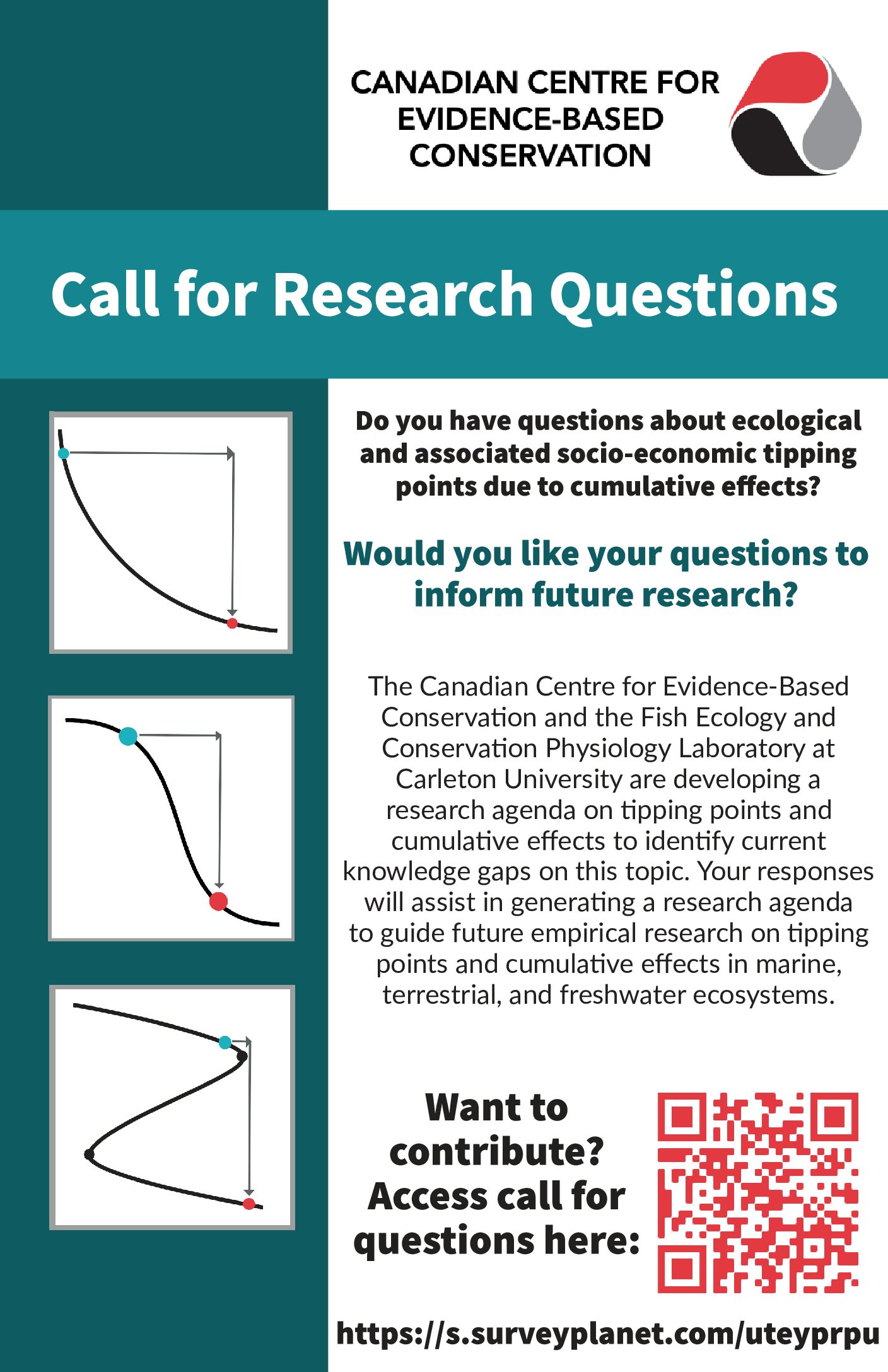(2014)
Habitat loss or alteration is one of the main drivers behind global declines in biodiversity. As a result, I am broadly interested in the fundamental connections between a species and its habitat. Recently, I completed work focused on coastal wetlands, using remote sensing and modeling to determine how habitat will respond to predicted changes in water levels. Working in aquatic habitat peaked my interest in fish movement. To this end, I looked at habitat selection by fishes in and among coastal wetlands. Moving forward, I am increasingly curious about the mechanisms behind fish habitat selection and the factors that drive their movement.
My earlier work was focused more at the landscape level and I hope to learn more about fish movement, fish physiology, and telemetry during my time in the Cooke Lab. I am excited to be involved in multiple projects. In early March, I had the opportunity to travel to Denmark to start a study looking at the impact of stress on the out-migration of brown trout. We will hopefully get data for this study in late May or early June. In Watt’s Creek we have started a study to determine how the fish community will respond following habitat restoration. We will also look at habitat selection and movement of fish species in the creek. Some other projects are in the pipe, so I will update the website once things get finalized.
Background
2007-2012 – Ph.D. in Aquatic Ecology, McMaster University Department of Biology, Hamilton, ON
2002-2007 – B.Sc. in Biodiversity, McMaster University Department of Biology, Hamilton, ON
Lab Publications (46)
-
Reid, J.L., G. Zorn, S. Woods, J. Lamoureux, S.J. Landsman, J.D. Midwood, and S.J. Cooke. In Press. Do fish in an urban river system use a rehabilitated and reconnected stormwater pond during the summer? Water Biology and Security. 00:000-000.
-
Brooks, J.L., Lédée, E. J. I., Larocque, S. M., Cooke, S.J., Brown, E., and J.D. Midwood. 2025. The influence of thermal and hypoxia induced habitat compression on walleye (Sander vitreus) movements in a temperate lake. Movement Ecology. 13:1.
-
Reid, C. H., LaRochelle, L., Madden, J. C., Haniford, L. S., Burton, D., Midwood, J. D., & Cooke, S. J. (2024). Relative effects of electro-immobilisation and chemical anaesthesia on in situ post-release behaviour and reproductive success in nesting smallmouth bass (Micropterus dolomieu). Applied Animal Behaviour Science, 273, 106239.
-
Piczak, M. L., Theis, S., Portiss, R., Ruppert, J. L. W., Midwood, J. D. and Cooke, S. J. In Press. Assessing efficacy of ecological restoration for freshwater fishes in Toronto Harbour. Science of the Total Environment. 00:000-000.
-
Larocque, S.M., Bzonek, P.A., Brownscombe, J.W., Martin, G.K., Brooks, J.L., Boston, C.M., Doka, S.E., Cooke, S.J., and Midwood, J.D. 2024. Application of telemetry-based fish habitat models to predict spatial habitat availability and inform ecological restoration. Journal of Fish Biology. DOI: 10.1111/jfb.15899.
Other Publications
Jepsen, N., Boutrup, T.S., Midwood, J.D., & Koed, A. 2013. Does the level of asepsis impact the success of surgically implanting tags in Atlantic salmon? Fisheries Research 147:344-348
Midwood, J.D., Rokitnicki-Wojcik, D., & Chow-Fraser, P. 2012. Development of an inventory of coastal wetlands for eastern Georgian Bay, Lake Huron. ISRN Ecology vol. 2012, Article ID 950173, 13 pages. doi:10.5402/2012/950173
Midwood, J.D., & Chow-Fraser, P. 2012. Changes in aquatic vegetation and fish communities following five years of sustained low water levels in coastal marshes of eastern Georgian Bay, Lake Huron. Global Change Biology 18:93-105.
Midwood, J.D. & Chow-Fraser, P. 2010. Mapping floating and emergent aquatic vegetation in coastal wetlands of eastern Georgian Bay, Lake Huron, Canada. Wetlands 30(6):1141-1152.

